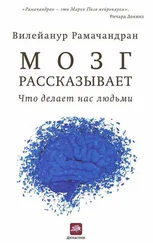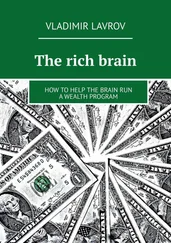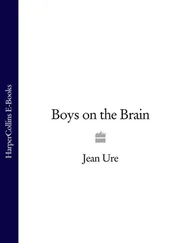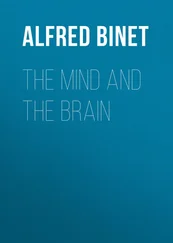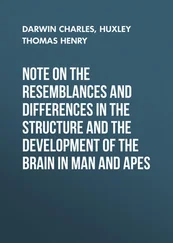Zaidel, E. 1985. “Academic Implications of Dual Brain Theory.” In D. Benson and E. Zaidel (eds.), The Dual Brain . New York: Guilford Press.
Zeki, S. 1980. “The Representation of Colours in the Cerebral Cortex.” Nature , 284:412–418.
Zeki, S.M. 1978. “Functional Specialisation in the Visual Cortex ofthe Rhesus Monkey.” Nature 274:423–428.
Zeki, S.M. 1993. A Vision of the Brain . Oxford: Oxford University Press.
Zihl, J., D. von Cramon, and N. Mai. 1983. “Selective Disturbance of Movement Vision after Bilateral Brain Damage.” Brain , 106:313–340.
Zuk, M., K. Johnson, R. Thornhill, and D.J. Ligon. 1990. “Mechanisms of Female Choice in Red Jungle Fowl.” Evolution , 44:477–485.
Page numbers in italics refer to illustrations.
acquired immunodeficiency syndrome (AIDS), 215
acupuncture, 51
Adamec, R.E., 285n
Adler, Ralph, 220
Aglioti, Salvatore A., 37, 82–83, 268n
akinetic mutism, 252, 253, 298n
alcoholism, 15, 134, 149
Alkon, Dan, 265n
Alley, T.R., 289n
Allman, John, 272n
Altschuler, Eric, 277n, 278n, 295n, 296n
amnesia, 160
Capgras’ syndrome compared with, 169–170
H.M. case and, xiii, 15, 148, 149, 265n
amputation stump, shortening of, vii, 32–33
amygdala, 16 , 162, 163 , 166, 167–168, 177, 178 , 182, 185, 186, 228
consciousness and, 244–245, 247, 252
Anderson, Willy, 199–200, 201, 202, 208, 288n
angular gyrus, 19, 195–196
Anna O., 294n
anomalies, 222–224
anorexia nervosa, 149, 155–156
anosognosia, vii, 2, 127–157, 249, 278n–283n
asymmetry of, 132
experiments with, 137–141
Freudian view of, 131–132, 133
hemispheric specialization and, 134–136, 279n–280n
“ice water in the ear” stimulation and, 144–148
neurological view of, 131, 132, 139–142
temporary remission of, 144–146, 148
of Wernicke’s aphasics, 280n
Anstis, Stuart, 290n
anterior thalmic nuclei, 178
Anthropologist on Mars, An (Sacks), 73
antibiotics, 214
Anton’s syndrome, 280n
anxiety, 13, 207
apes, 195, 197
appendix, phantom, 24–25
argus pheasant, tail feathers of, 68, 70
Aristotle, 24, 266n
Armel, Kathleen, 286n, 297n, 298n
arms, 14, 26
denial of paralysis in, 2, 127–132, 139–142, 149–155
of monkeys, 27–28
paralysis of, 43–44, 47
phantom, vii, 1, 21–24, 28–30, 30 , 34, 40–42, 45–50, 270n
prosthetic, 41, 270n
swinging of, 41–42
see also fingers; hands
art, 189, 192, 193, 194, 196, 197, 287n–288n
arthritic pain, 51
Arthur case, 2, 3–4, 158–173
auditory recognition in, 160, 168
duplication in, 172
galvanic skin response in, 164–165
visual categories problem in, 170–171
asthma, 219–220
Astonishing Hypothesis, The (Crick), xii
attention, 116–117, 120
attention shift idea, 286n, 287n
auditory cortex, 14, 168
auditory nerve, 37
auditory nucleus, 37–38
Austen, Jane, 152
autistic children, 195, 286n, 292n
autonomic nervous system, 163–164, 163 , 177, 219, 247
Avery, Oswald, 263n
axon terminals, 8
Baars, B., 296n
Babinski, Joseph François, vii, 128
bacteria, as cause of ulcers, xv, xviBalint’s syndrome, 80
Barglow, P., 294n
Barkow, J.H., 288n
Barlow, Horace, 264n
basal ganglia, 10, 13, 14, 16
Baywatch (TV program), 11
Bear, D.M., 248, 285n
Beard, A.W., 285n
bee waggle dance, 243–244
behaviorism, 229, 264n
belief system, 140, 142, 155–156, 279n
experiment on, 151–152
left hemisphere and, 134–136, 141, 147, 282n
Benson, F., 269n
Bhagavad Gita , 127
bicycle wheel experiment, 94–95, 97
Bill (denial patient), 142–143, 281n
binding problem, 80–81
binocular vision, 89–90
biological variability, 215
Birnbaum, M.H., 296n
Bisiach, Edoardo, 144, 276n–277n
black box approach, 263n–264n
Blakemore, Colin, xii
blindness, 63–65, 71
in Charles Bonnet syndrome, 87–88, 104–112, 274n–275n
color, 72–73, 230
motion, 72, 81, 272n
of Thurber, 85–87
blindsight, xvi, 2, 75–76, 118, 272n
blind spots, 70, 71 , 89–96, 235–237, 236 , 272n–274n
artificial, 273n–274n
in bicycle wheel experiment, 94–95, 97
in corner-of-a-square experiment, 94, 96
decapitation and, 91, 94
demonstration of, 89, 90
filling in, ix, 89–96, 90 , 104, 236–237, 236, 242–243, 273n, 297n
swastika pattern and, 94, 95
vertical black line run through, 91, 92
Block, N., 296n
Bloom, Floyd, 31
boasting, 255, 279n
body image, xi, 3, 253, 282n, 283n
anorexia and, 149, 155–156
cars and, 60–61, 136–137
coining of phrase, 44
malleability of, 58–62, 247
mirror in altering of, 49
nature vs. nurture and, 22, 27–31, 41–42, 56–58, 267n
parietal lobe and, 44, 45, 46, 49–50, 142, 156, 246, 247
reorganization of, vii-viii, 22
self and, 61–62, 247, 250
body parts, denial of ownership of, see somatoparaphrenia
Bogen, J.E., 279n, 280n, 298n
Bonnet, Charles, 104
see also Charles Bonnet syndrome Borsook, David, 35, 268n
brain, human:
black box approach to, 263n–264n
as computer, 56, 277n
discrepancy in sensory inputs and, 141, 142
hippocampus, 15, 16 , 17, 148, 163 , 178 , 265n
judgments of, 67–68
modularist vs. holistic view of, 10–11
motor system of, 44–45, 53–54
phantom limbs and, vii-viii, 22, 25–40, 45–46, 54–58
redundancy within, 34
size of, 191, 196–197, 265n, 293n–294n
split, xiii, 10, 280n
structure of, 7–10, 8 , 9 , 16
symbolic description in, 66–67
unified theory of, 4, 5
see also cerebral cortex; frontal lobes; left hemisphere; right hemisphere; temporal lobes; specific topics
Brain, Lord Russell, 44
Brain, Mind and Behavior (Bloom and Laserson), 16 , 178
brain, monkey, 27–28, 30, 77–78, 267n
brain damage, 12–19, 31, 196
vision and, 64–65, 72, 73, 75
see also stroke
brain mapping, brain maps, 39–40, 266n–267n
Penfield homunculus and, 25–27, 26, 29, 31, 32 , 37, 39, 44, 50, 267n, 268n, 298n
vision and, 70, 71
brain remapping, 27–31, 32, 33–40, 45, 56, 268n–269n
abnormal, 50–51
in monkeys, 27–28, 29, 33
savants and, 196
vision and, 274n
brain stem, 14, 17, 37, 116, 178 , 234
superior colliculus in, 73, 74
brain tumor, denial of, 142–143
breast cancer, 214
breasts, phantom, 24, 37
Breiter, Hans, 268n
Brewster, Sir David, 273n
Broca, Pierre Paul, 177
Brown, E., 294n
Brown, Richard, 295n
Brown-Sequard, Charles, 279n
Bruens, J.H., 285n
Bucy, Paul, 78
Buerger’s disease, 51
Burgess shale creatures, 292n
Caccace, A.T., 37
California, University of, Medical Center of, 127–129
Canadian Journal of Psychiatry , 23
cancer, 7, 214–215, 218
Capgras’ syndrome, ix, xvi, 2, 3–4, 158–173, 248, 284n
amnesia compared with, 169–170
auditory recognition and, 160, 168
Читать дальше


